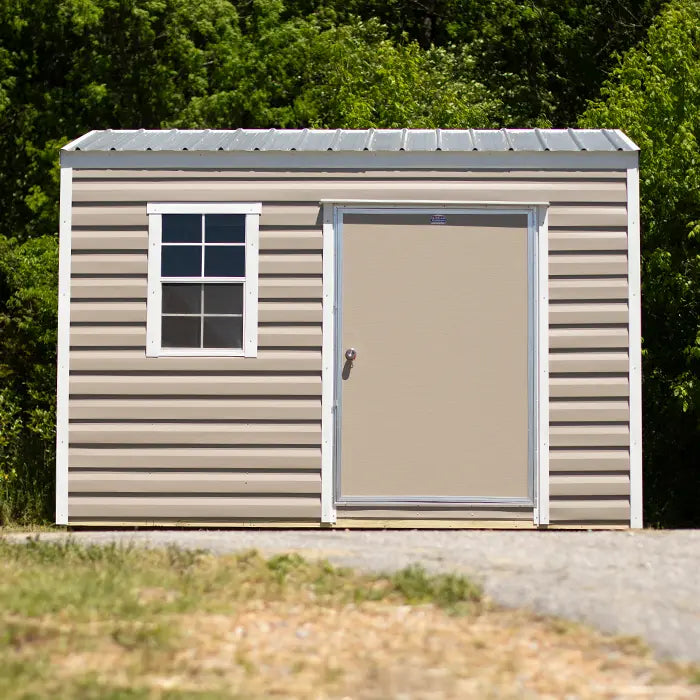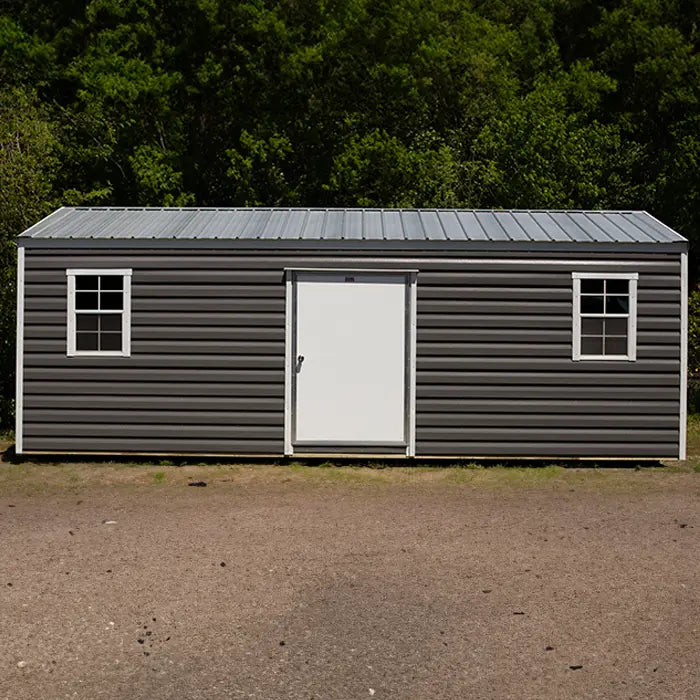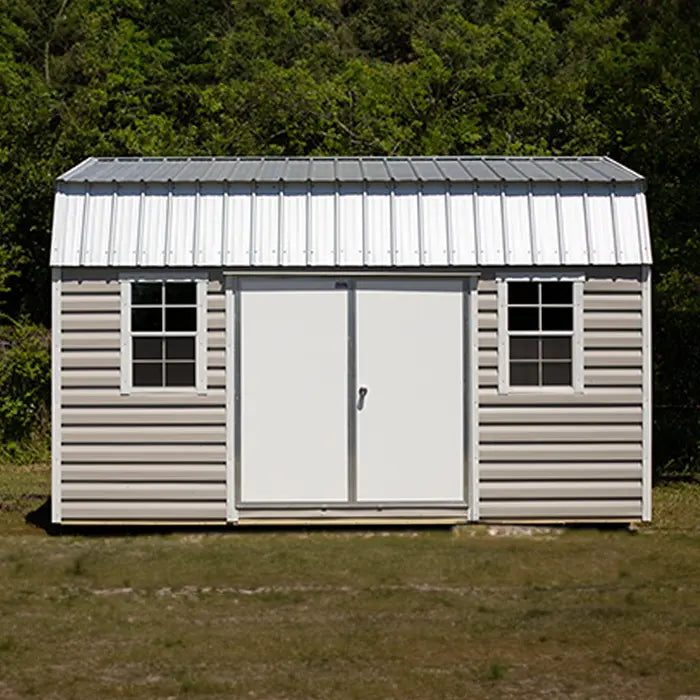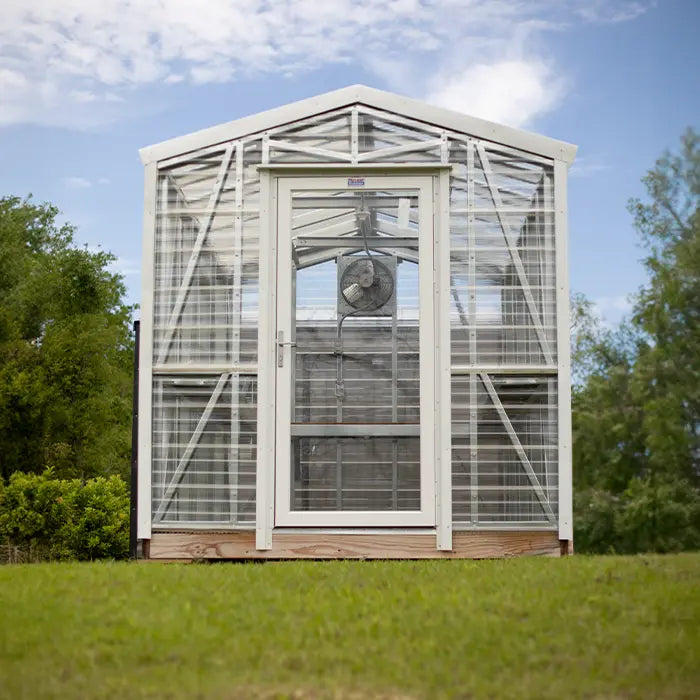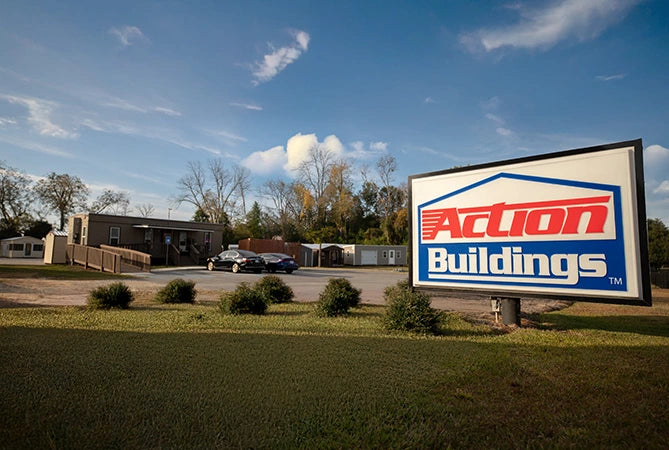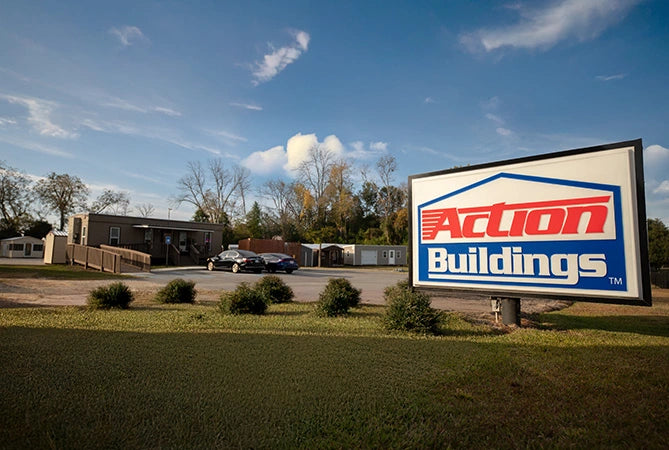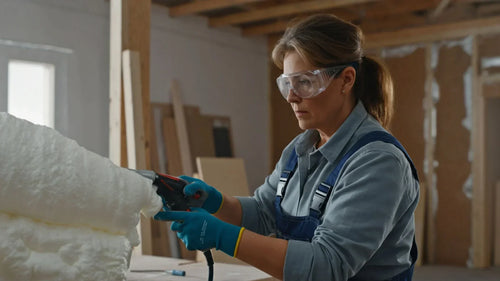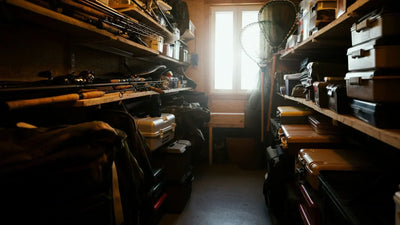Metal sheds are incredibly durable, but without proper insulation, they can become uncomfortably hot in summer and freezing cold in winter. At Action Buildings, we understand the importance of creating comfortable, year-round storage and workspace solutions. Whether you're converting your shed into a workshop or simply want to protect your stored belongings, proper insulation makes all the difference.
Insulating your metal shed isn't just about comfort—it's about protecting your investment. When you take the time to insulate correctly, you're creating a controlled environment that prevents condensation damage, reduces temperature extremes, and transforms your basic storage space into a truly functional area you'll actually want to use.
This comprehensive guide walks you through everything you need to know about insulating a metal shed effectively. From choosing the right materials to mastering installation techniques, we'll help you create a comfortable, protected space that serves your needs throughout every season.
Why Insulate a Metal Shed Matters
Regulating Temperature
Metal conducts heat and cold extremely efficiently, which means your uninsulated shed becomes a reflection of outside temperature conditions. During Georgia and Alabama summers, an uninsulated metal shed can reach temperatures exceeding 120°F, making it nearly impossible to work inside or safely store temperature-sensitive items.
In winter, the opposite problem occurs. Your shed becomes so cold that stored liquids may freeze, tools become uncomfortably cold to handle, and any time spent inside becomes unpleasant. Quality insulation creates a thermal barrier that moderates these extreme temperature swings.
When you properly insulate your shed, you're creating a buffer zone that maintains more consistent internal temperatures. This regulation allows you to use your space comfortably year-round, whether you're organizing tools, working on projects, or accessing stored items during extreme weather conditions.
Reducing Moisture
Condensation represents one of the biggest threats to both your shed and its contents. When warm, humid air meets cold metal surfaces, water droplets form and create the perfect environment for rust on metal surfaces and damage to stored belongings.
This moisture problem becomes particularly severe during temperature transitions—those spring and fall periods when daytime temperatures rise significantly while nighttime temperatures remain cool. Without insulation, your shed's metal walls become condensation magnets.
Proper insulation addresses this issue by maintaining more consistent interior temperatures and reducing the temperature differential between indoor air and metal surfaces. Many insulation solutions also include vapor barriers that prevent moisture from reaching the metal structure altogether.
Protecting Stored Items
The items you store in your shed deserve protection from temperature extremes and humidity fluctuations. Tools can rust, electronics can suffer moisture damage, and even clothing or fabric items can develop mildew in poorly controlled environments.
Consider the investment you've made in the tools, equipment, and belongings housed in your shed. Power tools, garden equipment, seasonal decorations, and sporting goods all perform better and last longer when stored in temperature-controlled environments.
Quality shed insulation acts as insurance for your stored items, preventing the costly replacement of damaged goods while ensuring everything remains in excellent condition when you need it.
Choosing the Right Insulation
Selecting appropriate insulation materials is crucial for achieving optimal results in your metal shed insulation project. Different materials offer varying benefits, and the right choice depends on your budget, installation skills, and specific performance requirements.
Most Effective Materials
Spray Foam Insulation
Spray foam provides the highest performance option for insulating metal storage sheds. This material expands to fill gaps completely and creates an excellent air seal while providing superior R-value per inch. Professional spray foam installation creates a continuous insulation barrier that eliminates thermal bridging and prevents air infiltration.
The closed-cell variety offers moisture resistance and adds structural strength to your shed. While spray foam requires professional installation and costs more initially, it provides unmatched performance and durability. Professional insulation experts recommend spray foam for sheds that will see heavy use or require precise temperature control.
Rigid Foam Boards
Rigid foam insulation offers an excellent balance of performance, cost, and installation simplicity. These boards maintain their insulation value over time without settling or compressing. Available in various thicknesses, rigid foam can be cut to fit precisely and provides consistent thermal performance.
Polyisocyanurate and extruded polystyrene boards offer the best performance, with high R-values and moisture resistance. Installation involves measuring, cutting, and securing panels with adhesive or mechanical fasteners. This option works particularly well for DIY enthusiasts who want professional results without professional installation costs.
Fiberglass Insulation
Traditional fiberglass batts remain a popular choice due to their affordability and availability. When properly installed with appropriate vapor barriers, fiberglass provides adequate thermal performance for most shed applications.
However, fiberglass requires careful installation to prevent compression and maintain effectiveness. It also needs protection from moisture to perform optimally. This material works best in sheds with good ventilation and when installed by someone familiar with proper techniques.
Solutions Tailored to Your Needs
Your choice of insulation should align with how you plan to use your insulated metal shed. A simple storage application may require different solutions than a workshop or hobby space.
For Basic Storage Applications
If your primary goal involves protecting stored items from temperature extremes, focus on cost-effective solutions that provide adequate thermal protection. Rigid foam boards or properly installed fiberglass with vapor barriers can meet these needs while staying within reasonable budgets.
For Workshop or Office Use
Spaces where you'll spend significant time require higher-performance insulation. Consider spray foam or high-R-value rigid foam combined with interior finishing materials. These applications benefit from comprehensive insulation that includes walls, ceiling, and even floor areas.
For Climate-Controlled Requirements
Some applications demand precise temperature control. Pharmaceutical storage, wine storage, or sensitive electronic equipment may require professional-grade insulation systems combined with HVAC equipment.
Best Practices for Insulation
Successful shed wall insulation projects require careful planning and attention to detail. Following proven best practices ensures your insulation performs optimally and provides years of reliable service.
Efficient Project Planning
Start by assessing your shed's current condition and determining exactly what improvements you need. Measure all wall, ceiling, and floor areas that require insulation. Calculate material quantities accurately to avoid project delays or unnecessary expenses.
Consider the electrical requirements for your finished space. If you plan to add lighting, outlets, or ventilation fans, coordinate electrical rough-in work with your insulation installation. Action Buildings offers professional electrical packages that can be integrated seamlessly with insulation projects.
Create a realistic timeline that accounts for weather conditions and material delivery. Some insulation materials perform better when installed within specific temperature ranges, so plan accordingly.
Successful Execution
Preparation determines the success of your insulation project. Clean all surfaces thoroughly and address any structural issues before beginning installation. Check for and seal air leaks around doors, windows, and penetrations.
Maintain consistent installation quality throughout your project. Gaps, compression, or poorly sealed joints can significantly reduce insulation effectiveness. Take time to cut materials accurately and secure them properly.
Safety should remain your top priority throughout installation. Use appropriate personal protective equipment, ensure adequate ventilation when using adhesives or sealants, and follow manufacturer guidelines for all materials.
Step-by-Step Guide to Insulate Your Metal Shed
Preparation
Clear and Clean the Space
Remove everything from your shed and sweep or vacuum all surfaces thoroughly. Clean metal surfaces with degreasing agents to ensure good adhesion for adhesives and sealants. Inspect the structure for damage and complete any necessary repairs before proceeding.
Gather Tools and Materials
Essential tools include measuring tape, utility knife, straight edge, cordless drill, safety glasses, work gloves, and dust mask. Material requirements depend on your chosen insulation type but typically include insulation materials, vapor barrier, adhesives or fasteners, and sealing materials.
Address Safety Considerations
Ensure adequate lighting for detailed work and maintain clear pathways for material movement. When working with fiberglass insulation, wear long sleeves, pants, and respiratory protection. Verify that your shed has adequate ventilation during installation, especially when using adhesives or spray products.
Installation
Ceiling Installation Process
Begin with ceiling areas to prevent debris from falling onto completed wall sections. For rigid foam boards, measure each bay between ceiling joists and cut panels slightly oversized for snug fits. Apply construction adhesive to joists and press panels firmly into place.
Seal all joints between panels with appropriate tape or expanding foam sealant. Pay particular attention to areas where different materials meet, as these represent potential thermal bridges and air leak locations.
Wall Installation Techniques
Work systematically around the shed perimeter, completing one wall at a time. Cut insulation materials to fit precisely between wall studs, avoiding compression that reduces effectiveness. For metal sheds with steel framing, use mechanical fasteners designed for metal applications.
Install vapor barriers on the warm side of the insulation to prevent moisture infiltration. Overlap barrier seams by at least six inches and seal with appropriate tape to create continuous moisture protection.
Sealing and Finishing Details
Complete installation by addressing all gaps, joints, and penetrations. Use expanding foam to seal irregular spaces around electrical boxes, pipes, or other building penetrations. Install trim or finishing materials as desired to create a professional appearance.
Consider ventilation requirements for your finished space. Properly insulated sheds may require ventilation to prevent moisture accumulation, especially in humid climates common throughout Georgia and Alabama.
Maintenance Tips for Long-Lasting Insulation
Regular Inspections
Schedule annual inspections to identify potential issues before they become serious problems. Look for signs of moisture infiltration, settling, or damage from pests. Check that vapor barriers remain intact and properly sealed.
Examine the exterior of your shed for damage that could allow moisture penetration. Address roof leaks, siding damage, or foundation issues promptly to protect your insulation investment.
Addressing Issues Promptly
Minor insulation problems can quickly become major issues if left unaddressed. Replace damaged insulation sections immediately to maintain thermal performance and prevent moisture-related problems.
Keep spare insulation materials on hand for quick repairs. Document your original installation with photos and material specifications to ensure proper replacement materials when needed.
Frequently Asked Questions
How much does it cost to insulate a metal shed?
Costs vary significantly based on shed size, insulation type, and installation method. Basic fiberglass insulation for a 10x12 shed might cost $200-400 in materials, while professional spray foam installation could range from $800-1,500 for the same space. Consider long-term energy savings and comfort benefits when evaluating insulation investments.
Can I insulate a metal shed myself?
Many shed insulation projects are well-suited for DIY installation, particularly rigid foam boards and fiberglass batts. However, spray foam insulation typically requires professional installation due to equipment requirements and technical expertise. Family Handyman offers detailed guidance for DIY insulation projects.
What R-value do I need for a metal shed?
Recommended R-values depend on your climate zone and intended use. For storage applications in the Southeast, R-11 to R-15 in walls and R-19 to R-25 in ceilings typically provide adequate performance. Workshop or office spaces may benefit from higher R-values for optimal comfort.
Should I insulate the floor of my metal shed?
Floor insulation provides additional comfort and energy efficiency, especially for heated spaces or those used as workshops. If your shed sits on a concrete slab, rigid foam insulation can be installed over the slab before adding flooring materials.
How do I prevent condensation in an insulated metal shed?
Proper vapor barrier installation on the warm side of insulation prevents most condensation issues. Additionally, ensure adequate ventilation to remove moisture generated by activities inside the shed. Consider installing exhaust fans if you use the space for activities that generate significant moisture.
Transform Your Metal Shed into a Year-Round Asset
Properly insulating a metal shed transforms it from basic storage into a comfortable, functional space you'll use throughout the year. Whether you're protecting valuable tools and equipment or creating a workshop for your side hustle, quality insulation makes the investment worthwhile.
Remember that insulation works best when installed as part of a comprehensive approach that includes proper ventilation, moisture control, and quality construction. Starting with a well-built foundation ensures your insulation performs optimally for years to come.
At Action Buildings, we understand that every shed serves unique purposes. Our customizable metal buildings provide the perfect foundation for insulation upgrades, featuring robust steel construction and professional electrical packages designed to support your vision.
Ready to transform your outdoor storage into a comfortable, functional workspace? Contact Action Buildings today to explore our full range of steel-framed portable buildings designed with your upgrade potential in mind. With locations throughout Georgia and Alabama, we're here to help you create the perfect storage solution for your needs.
For additional insights on maximizing your shed's potential, explore our guides on upgrading small metal sheds and optimizing lighting solutions for year-round comfort and functionality.
